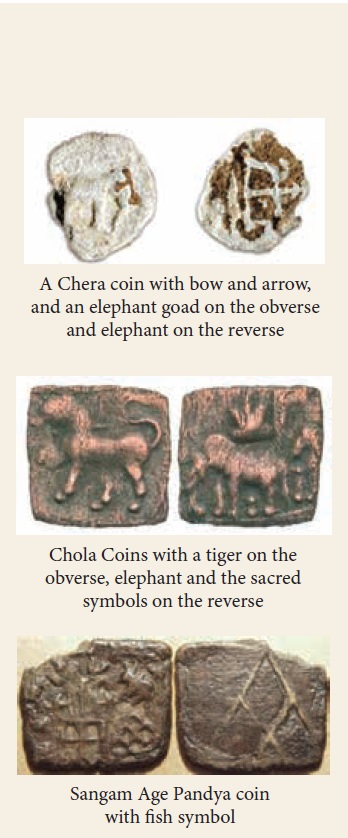History - Sangam Age Polity: Political Powers of Tamilagaram | 9th Social Science : History : Early Tamil Society and Culture
Chapter: 9th Social Science : History : Early Tamil Society and Culture
Sangam Age Polity: Political Powers of Tamilagaram
Sangam Age Polity: Political Powers of Tamilagaram
The Sangam Age has its roots in the Iron Age. In
the Iron Age people were organised into chiefdoms.
From such communities of Iron Age emerged the Vendhars of the early historic
period and the Velirs of the Sangam Age were chieftains.
The Mauryan emperor, Asoka, conquered Kalinga
(Odisha) and parts of Andhra and Karnataka regions. Ashokan inscriptions found
in present day Odisha, Karnataka, Telangana and Andhra Pradesh are not seen in
Tamil Nadu and Kerala. Therefore, we may conclude that the Tamil rulers were
independent of Mauryan authority.
The Muvendhar
Among the political powers of the Sangam Age, the
Cheras, the Cholas and the Pandyas occupied pre-eminent positions. They were
known as Muvendhar (the three kings).
The muvendhar controlled the major
towns and ports of the Sangam period.
The Cheras
The Cheras, referred to as Keralaputras in the
Ashokan inscriptions, controlled the region of present-day Kerala and also the
western parts of Tamil Nadu. Vanci was the capital of the Cheras while Muciri
and Thondi were their port towns. Vanci is identified with Karur in Tamil Nadu
while some others identify it with Thiruvanchaikkalam in Kerala.
Pathirtruppathu speaks about the Chera kings and their territory. The Cheras
wore garlands made from the flowers of the palm tree. The inscriptions of
Pugalur near Karur mention the Chera kings of three generations. Coins of Chera
kings have been found in Karur.
The Silappathikaram
speaks about Cheran Senguttuvan, who built a temple for Kannagi, the
protagonist of the epic. The bow and arrow was the symbol of the Cheras. Legend
has it that Ilango who composed the Silappathikaram,
was the brother of Cheran Senguttuvan.
The Cholas
The Cholas ruled over the Kaveri delta and northern
parts of Tamil Nadu. Their capital was Uraiyur and their port town was
Kaveripoompattinam or Pumpuhar, where the river Kaveri drains into the Bay

Pattinappaalai is a long poem about
Kaverip o ompattinam composed by the poet Kadiyalur Ur u t h i r a n k a n n a
n a r. Silappathikaram describes the trading activities at Kaveripoompattinam.
Karikalan is notable among the Chola kings and is credited with bringing
forestlands under the plough and developing irrigation facilities by
effectively utilising the water from the river Kaveri. The foundation for the
extensive harnessing of water for irrigation purposes, which reached its zenith
in later Chola times (10th to 13th centuries) was laid in his time. Karikalan
fought battles with the Pandyas, Cheras and other chieftains. The Chola emblem
was the tiger and they issued square copper coins with images of a tiger on the
obverse, elephant and the sacred symbols on the reverse.
The Pandyas
The Pandyas who ruled the southern part of Tamil
Nadu are referred to in the Ashokan inscriptions. Madurai was the Pandya’s
capital. Tamil literary tradition credits Pandyan rulers with patronizing Tamil
Sangams (academies) and supporting the compilations of poems. The Mangulam
Tamil -Brahmi inscription mentions the king Nedunchezhiyan. Nediyon,
Mudathirumaran, Palayagasalai Mudukudumipperuvazhuti were some of the important
rulers of the dynasty. The Pandyan symbol was the fish.
Velirs / Chieftains
Apart from the Vendhars,
there were Velirs and numerous
chieftains who occupied territories
on the margins of the muvendhar. The velirs were the seven chiefs Pari, Kari,
Ori, Nalli, Pegan, Ai and Athiyaman. Sangam poems write extensively about the
generosity of these velirs. These
chiefs had intimate relations with the poets of their time and were known for
their large-heartedness. These chieftains had alliance with one or other of the
muvendhar and helped them in their
battles against the other Vendhars.
Related Topics